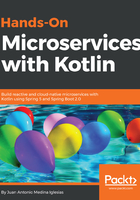
Bounded context
When a domain model grows, it becomes complicated to have a unified domain model. Sometimes, we face a situation when we see two different representations of a concept, for example, let's examine the concept of family in a large model.
In a shopping platform, we may have the concept of products families, for example, our fabulous 32" LCD screen and the classical 24" CRT screen are part of the screen family. On the other hand, our speed offers and last day offers are part of our limited timed-offer family.
We could see that family may not be exactly the same thing on products and offers, probably they both have a unique name on their model, but in each context they may have a totally different model and logic.
In DDD, we separated them in to bounded contexts, a boundary that surrounds a model. This keeps the knowledge inside the boundary consistent, ignoring the outside world so we could still have our ubiquitous language for our domain model.